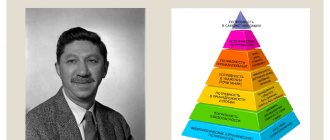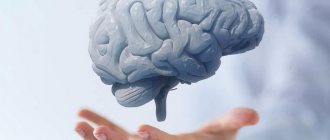What is identification of goods and products? This is the work of determining the compliance of a product item with various technical and regulatory documents, as well as instructions and labels. It is important that any item corresponds to the documentation for many characteristics that affect the authenticity of the object. This concerns fundamental characteristics, among which there cannot be insignificant or those that are easy to falsify. Let's figure out what this procedure is, how it is performed, and what tools will help with this.
Definition of Identification
This term is translated from Latin as “identification” - something that will not change for a long time. The word is multitasking; it is used in different fields and types of activities. This also includes checking at customs for markings, descriptions and other identification features.
This is a complex and intensive process, often lengthy and expensive. But this is the only way to detect falsification.
Counterfeiting includes counterfeits, substitutions during the production or sales process. Such products are of reduced quality and do not correspond to the declared properties or name. This is the sale of obviously less valuable things at an inflated price. It is important to promptly identify anything that does not fit the specifications and remove it from sale.
History of discovery and study
The concepts of “defense mechanisms” and “identification” were introduced into psychological science by Sigmund Freud. According to his interpretation, identification is:
- a defensive reaction that occurs against the background of fear of punishment for aggressive behavior or sexual attraction;
- unconscious identification of the subject with another against the background of fear of loss of love.
In psychoanalytic teaching, identification is considered as the only mechanism contributing to the formation of personality. Through unconscious identification, the child reproduces the parental image.
In behaviorism, identification is considered as a mechanism for the formation of social roles. It is associated with the need to reinforce secondary needs.
Types and methods of identifying goods: what is it
To fully understand the term, a classification should be given. There are only four main criteria:
- According to a material fixed image. This includes tire tread marks and similar examples.
- By establishing ownership of something. These are scraps of fabric, fragments of plates, individual parts or parts that can be tested.
- Search through the memory of witnesses. The thing is identified according to the images that people who saw the identified object remember.
- Comparison. It is carried out using previously defined signs, applying them to the desired object.
Science, art and forensics
In chemistry, to identify is to establish an identity between an unfamiliar compound and an already known one. This word has the same meaning in other scientific fields, where experiments are carried out comparing various objects, figures, numerical values, formulas and phenomena. Even in art, identification is sometimes used. It is necessary if, for example, it is necessary to establish the authorship of a work. In this case, scientists carry out a comparative analysis of things written by a writer, poet, composer or artist, and based on the data they identify with them or reject the controversial creation. In forensic science, to identify means to identify a person or his things by comparing existing facts (signs) with unchangeable ones inherent in a particular person. These can include photographs, voice recordings, DNA, fingerprints, blood tests, and others.
Ready-made solutions for all areas
Stores
Mobility, accuracy and speed of counting goods on the sales floor and in the warehouse will allow you not to lose days of sales during inventory and when receiving goods.
To learn more
Warehouses
Speed up your warehouse employees' work with mobile automation. Eliminate errors in receiving, shipping, inventory and movement of goods forever.
To learn more
Marking
Mandatory labeling of goods is an opportunity for each organization to 100% exclude the acceptance of counterfeit goods into its warehouse and track the supply chain from the manufacturer.
To learn more
E-commerce
Speed, accuracy of acceptance and shipment of goods in the warehouse is the cornerstone in the E-commerce business. Start using modern, more efficient mobile tools.
To learn more
Institutions
Increase the accuracy of accounting for the organization’s property, the level of control over the safety and movement of each item. Mobile accounting will reduce the likelihood of theft and natural losses.
To learn more
Production
Increase the efficiency of your manufacturing enterprise by introducing mobile automation for inventory accounting.
To learn more
RFID
The first ready-made solution in Russia for tracking goods using RFID tags at each stage of the supply chain.
To learn more
EGAIS
Eliminate errors in comparing and reading excise duty stamps for alcoholic beverages using mobile accounting tools.
To learn more
Certification for partners
Obtaining certified Cleverence partner status will allow your company to reach a new level of problem solving at your clients’ enterprises.
To learn more
Inventory
Use modern mobile tools to carry out product inventory. Increase the speed and accuracy of your business process.
To learn more
Mobile automation
Use modern mobile tools to account for goods and fixed assets in your enterprise. Completely abandon accounting “on paper”.
Learn more Show all automation solutions
For warehouse For store For institutionConsumers contribute to the identification and recognition of products by assortment. Their response allows us to remove low-quality products from the market.
High-quality sorting helps to distribute by grade, identify defective samples and remove them from circulation. A separate type of process rejects products for certain characteristics - genetically modified, with excess sugar, or others.
Identity determination is mainly carried out visually - the appearance and the photograph in the passport are checked.
Stages
The first stage of identification formation, which occurs at an early age, is very important for personality development. Not only S. Freud, but also other classical psychologists insisted on this. In the first years of life, identification occurs under conditions of high emotional load, but it also becomes a necessary condition for further alienation and the formation of one’s own ideas about oneself as a person.
In the process of differentiation by the child of himself and isolation from others, his independence grows, he begins to better understand himself as a source of activity. The child learns to act differently from others.
Jung believed that identification is necessary for the development of personality at a stage when there is no individual path yet. As soon as the opportunity arises to follow the path of individual development, identification turns from a factor stimulating development into an obstacle to it. Identification at the stage when a person must take his own path provokes dissociation and prevents him from gaining integrity. Jung believed that identification is a very important stage that precedes individuation.
As a person matures, the importance of identification decreases, while alienation, on the contrary, increases and reaches its maximum level in adulthood. The exception is during periods when a person goes through an identity crisis.
What is it: identification in trade and commodity science
In the sales field, the quality and compliance of documents of various types should be monitored and controlled. This is one of the important actions that is carried out at every stage of production. Only an item that fully meets all parameters can be labeled.
Samples are compared to a standard for significant characteristics to check for authenticity and quality. Labeling and drawing up regulatory documents prevent low-quality or illegal items from entering the market.
Using identification, you can identify and confirm the authenticity of the assortment. It is carried out at every stage of production. Among the methods:
- Organoleptic. Taste and smell of the substance being tested, turbidity, ratio of solid and liquid fractions, consistency.
- Chemical-physical. Size, density, color, appearance, ductility.
- Microbiological. Properties at the level of bacteria and protozoa. It is checked for the presence of harmful particles and suspensions, microorganisms and microparticles.
Concept
This is the name for matches between the tested and sample versions of products. When dividing into groups, specialists are based on technological indicators, descriptions on the label, instructions, accompanying documentation.
The examination helps to establish the compliance of a part with a homogeneous product group or list, depending on individual characteristics.
There are 5 questions that help classify trade turnover:
- Is the product related to the food industry or is it used for technical purposes - in the form of feed, fertilizer?
- What different classes do the goods belong to or are they the same homogeneous things from the same variety.
- Does the product correspond to its indicators in terms of quality and quantity, technical description and labeling?
- What type of product is it? Is it easy to recognize it among similar samples.
- Is it classified as prohibited for sale? Are there any restrictions on sales - quotas, licenses?
Based on the results of this examination, a conclusion is issued, which will contain all the answers to the questions. Compliance with the characteristics and declared properties is prescribed. It is indicated whether the item belongs to drugs whose distribution is prohibited or restricted.
This is a fundamental test and all production must begin with it. It is important to remember that if a product is incorrectly identified, then its quality is difficult to correctly assess.
You can research everything from products and information channels to various elements of commercial activity.
Why is it carried out?
The main goal of identification is to recognize the similarity of sample units with a sample. Establish and approve the originality of a specific subtype of products, check the similarity of the requirements with the markings on the packaging.
Main tasks:
- Development of basic criteria that will help divide the contents of the warehouse into similar groups and varieties.
- Research of consumer properties - how to identify the most reliable parameters of similarity.
- Improving templates and documentation that will help identify standards for classification by type.
- Improving methods and processes for identifying goods, creating express methods that will help quickly determine all the fundamental parameters.
Adaptive process
Let's consider identification as an adaptive process. What does it consist of? In an attempt to become like a certain person, to adopt his features. Instead of an individual, there can be a group of people. This begins in childhood, so initially identification is quite primitive. Over time, a strong emotional attachment develops to the chosen object, or to a group of people. The person feels one with them and “absorbs” not only character traits and characteristics, but also the values, attitudes and patterns of behavior of the group or object of worship.
Adaptive identification can change over time. For example, if during her school years her target was a local bully and this gave her a certain social status, then an adult is unlikely to want to have the status of a criminal.
Products
For 1C:EnterpriseFor SAP R/3For Microsoft DynamicsFunctions
Among the diversity there are 4 main ones:
- Pointing. With its help, any sample is compared with a standard by variety, name, brand, type.
- Informational. Its goal is to bring information to everyone who is interested in it.
- Confirming. Monitors product compliance with labeling and data in accompanying documentation. With its help, you can determine whether the item is genuine in front of the consumer or inspector.
- Manager. The main element of quality control.
Types of product identification
The object of the procedure is considered to be a product, raw material, or semi-finished product. Their assessment is extremely important for the consumer; it must be at a high level. There are three types of process.
Assortment (species) affiliation
This is checking the assortment according to the most essential features, monitoring the authenticity of products. It is important to determine how well the product complies with the characteristics specified in the instructions for use, on the label, and in other regulatory documents.
This type is intended to determine compliance with the variety, name, subgroup, brand. Therefore, there are subspecies:
- by groups;
- by type;
- by country of production;
- by brand.
In most edible products, organoleptic and physicochemical parameters are important. Determining the relationship to this subgroup depends on the presence of raw materials of animal or plant origin.
Species identification allows you to determine membership in a group by appearance. This is a serious indicator that the merchandiser must pay attention to at the time of acceptance of the delivery.
Qualitative (qualimetric)
This includes establishing the similarity of a product with its description, consumer properties, regulatory documents, samples and other requirements.
The indicators are influenced by:
- production technology;
- composition of raw materials;
- chemical formulation;
- design.
During the check, absolute and relative indicators are established. The first pass with an indication of the presence of a match in the column. The latter are monitored on a quality level scale - how much it matches the characteristics.
There are several subspecies:
- Component. How similar are the components or components to what is indicated on the label or accompanying papers?
- Prescription. The composition in the recipe and in fact is compared. Particularly relevant to the ratio of chemical elements in the food and tobacco industries. One of the identification features is the mass fraction of a specific substance in the composition.
- Technological. It is determined to what extent the planned manufacturing technology matches the actual one. The purpose of the test is to find and reject those products that were made in violation of the procedure. If they are found, inspection and identification of the reasons why defects arise begins. Some become visible during normal visual inspection, but others can only be detected under laboratory conditions.
- Categorical. To what extent does the product correspond to the quality that is required for similar products?
- Structural. The identity of the design to the requirements, which are described in detail in the instructions and regulatory documents, is determined.
Party
Here it is established how much one unit belongs to the entire lot. The main purpose of such a check is to monitor the quality of production at all stages and ensure that all parts of the delivery are uniform.
To determine which products belong to a specific group, they are marked in a certain way - the same marks are placed on each product.
Structure and functions
Identification occurs gradually. In the structure of the formation of this psychological defense mechanism, the following stages are distinguished:
- a connection arises with an important object on an emotional level, “trying on” the feelings of another person to oneself occurs;
- perception of an important object as oneself - the most striking features of another (an object to be imitated), his style of behavior, manner of speaking, spiritual values, beliefs, life guidelines, interests are integrated into the personality;
- own personal characteristics are assigned to a significant object. Your desires and feelings are attributed to a dear person.
Identification performs an adaptive function - an individual “takes” the traits of another person (or group) in order to be like him, to feel that he belongs to a clan.
Identification is a means that helps you immerse yourself in the world of another person, understand his thoughts and feelings.
Identification methods
There are different ways to determine the ownership of objects. Among the main ones are:
- Sensory or organoleptic. A method carried out using human senses. Depending on what is used - olfactory, tactile, auditory and visual.
- Laboratory or measuring. For this purpose, an examination is carried out, special technical means and devices are used. Among the popular ones: microscopy, photometry, chromatography, ionometry, fluorescence.
- Test ones. This subspecies is used to determine how suitable the raw material is for use.
Separately, there are continuous and selective methods. In the first case, every product that will be sold is checked. In the second, only a few units from the batch are taken for inspection.
The registration form is also important - it is used to put down individual numbers for each item that leaves the concern.
What is marking by means of identification? It is a way to keep control and take into account completeness. This is text, drawing or other symbol that is applied to the packaging.
Packing is something that is packaged before sale without the participation of the buyer. It is prohibited to open the package, change the length, weight, volume or other characteristics of the product. Everything that is indicated on the container should not change until the moment of sale.
Let's give a definition. Mechanisms
This is the definition: identification in psychology is a person’s need to establish coincidences and similarities with the object of his veneration. Note that this is an internal unconscious need.
We are talking about identification. What's behind this? What is the mechanism of identification in psychology?
S. Freud also spoke about this. He was the first to develop this mechanism. According to Freud, a person who perceives the world as a system of riddles and mysterious things is unable to independently realize the true purpose of the world around him and the meaning of existence. Such a person needs a system of reference points in order to be able to compare himself with a specific object.
Based on this, Freud considered the identification mechanism as an attempt by a weak person to compare himself with those individuals who are authorities for him. A weak person is afraid of reality. And such a mechanism allows him to reduce his fear of her.
Methods of identifying goods
It is important to compare products with labeling, label information or regulatory documents. To do this, one of the subgroups is selected and the analysis is carried out.
There are several varieties suitable for testing:
- physical;
- chemical;
- microbiological;
- commodity-technological.
Using different systems for identification
To speed up and simplify identification, as well as eliminate dubious manipulations, many verification methods have been created in all areas of production. The basic principle on which they operate is to read or scan the electronic or paper code on the product.
Supermarkets have their own program that identifies products. The cashier simply brings the item for sale to the scanner, which reads the barcode. Information about the full name, quantity in stock and cost appears on the screen.
Another program helps limit entry into the premises. To do this, simply create plastic cards with employee data, and using the cards, access to different premises is provided. This way you can technically distribute who can enter the warehouse, office, or accounting department.
If you find it difficult to decide which system will be useful in production or in a company, contact Cleverence. Employees will help you identify business objectives and select the equipment and software that will cope with the problems.
Defense mechanism
Identification in psychology can represent a defense mechanism. It is the idea of someone as oneself. The most striking example of such a mechanism is parents’ identification with their own children. The parent projects his own desires and needs onto the child, and then prescribes his achievements. For example, my mother dreamed of being a pianist all her life. But she became an accountant. She creates such antecedent factors in the environment that her daughter will follow this path. Against the child's will. And when she achieves success, my mother is as proud of herself as if she had succeeded as a pianist.
Ready-made solutions for all areas
Stores
Mobility, accuracy and speed of counting goods on the sales floor and in the warehouse will allow you not to lose days of sales during inventory and when receiving goods.
To learn more
Warehouses
Speed up your warehouse employees' work with mobile automation. Eliminate errors in receiving, shipping, inventory and movement of goods forever.
To learn more
Marking
Mandatory labeling of goods is an opportunity for each organization to 100% exclude the acceptance of counterfeit goods into its warehouse and track the supply chain from the manufacturer.
To learn more
E-commerce
Speed, accuracy of acceptance and shipment of goods in the warehouse is the cornerstone in the E-commerce business. Start using modern, more efficient mobile tools.
To learn more
Institutions
Increase the accuracy of accounting for the organization’s property, the level of control over the safety and movement of each item. Mobile accounting will reduce the likelihood of theft and natural losses.
To learn more
Production
Increase the efficiency of your manufacturing enterprise by introducing mobile automation for inventory accounting.
To learn more
RFID
The first ready-made solution in Russia for tracking goods using RFID tags at each stage of the supply chain.
To learn more
EGAIS
Eliminate errors in comparing and reading excise duty stamps for alcoholic beverages using mobile accounting tools.
To learn more
Certification for partners
Obtaining certified Cleverence partner status will allow your company to reach a new level of problem solving at your clients’ enterprises.
To learn more
Inventory
Use modern mobile tools to carry out product inventory. Increase the speed and accuracy of your business process.
To learn more
Mobile automation
Use modern mobile tools to account for goods and fixed assets in your enterprise. Completely abandon accounting “on paper”.
Learn more Show all automation solutions
Identification through labeling
This includes affixing distinctive signs that will distinguish a batch, variety or subspecies. First, the group to which each unit belongs is determined; this is also stated in regulatory documents indicating the type of designation.
All positions are marked with a specific factor, inscription or number. This allows you to identify packaging or certain properties of an item.
Products
For microkiosks For RFID For TSD (data collection terminals)Fundamental information is always stored in shipping documentation. Regarding the party, such distinctive signs will be:
- number of shift, brewing;
- Date of issue;
- shelf life;
- manufacturer's name;
- Product Name;
- OKP code;
- other significant features.
All significant information is duplicated on the surface of the cheese or other food, on the packaging, label or bottom of the can.
Additionally, excise taxes are affixed - special marks that distinguish products that are available for sale only under a license.
Recognition by product range
To classify and distribute products into groups, it is necessary to identify the fundamental characteristics of product units.
To decide on the type of terminals and other equipment you need, contact Cleverence. There are experienced specialists here who will help simplify routine duties and bring order to warehouses, production, and stores.










